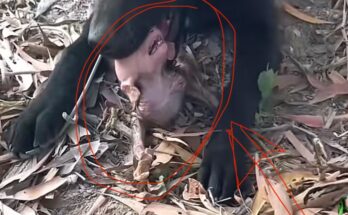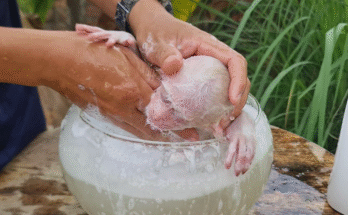When a newborn monkey loses contact with its mother or is found in a critical condition, specialized hospital care becomes essential for survival. Unlike domestic animals, primates require a delicate balance of medical precision and nurturing care. Here’s how veterinary teams and wildlife hospitals provide that support, step by step.
1. Triage & First Response
The journey begins the moment the newborn arrives. Wrapped in a clean towel for warmth, the baby is assessed for breathing, temperature, and weight. These initial checks are vital for identifying urgent needs such as low body temperature or respiratory distress. Quick yet gentle handling helps reduce stress in this fragile stage.

2. Stabilization in a Controlled Environment
Just like human premature infants, baby monkeys often require an incubator. Here, warmth, humidity, and oxygen levels are carefully adjusted to mimic the safety of the womb or a mother’s embrace. Monitors track heart rate and oxygen saturation, ensuring the infant remains stable while the body adjusts to life outside the wild.
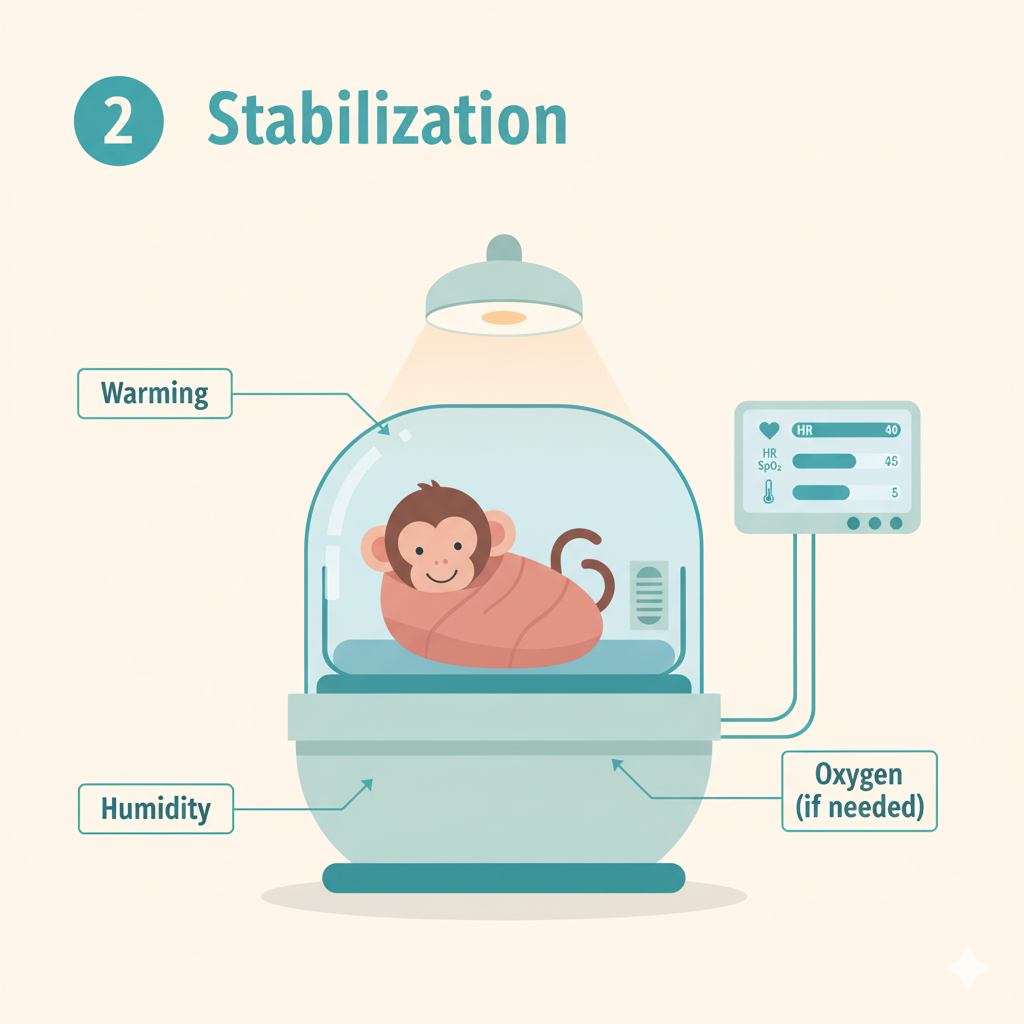
3. Nutrition and Hydration
Feeding is one of the most delicate tasks. Because newborn monkeys may be too weak to nurse, caretakers rely on specialized formula delivered by syringe or, in critical cases, via a soft feeding tube. Every meal is measured and logged, and gradual weight gain is used as a marker of progress.
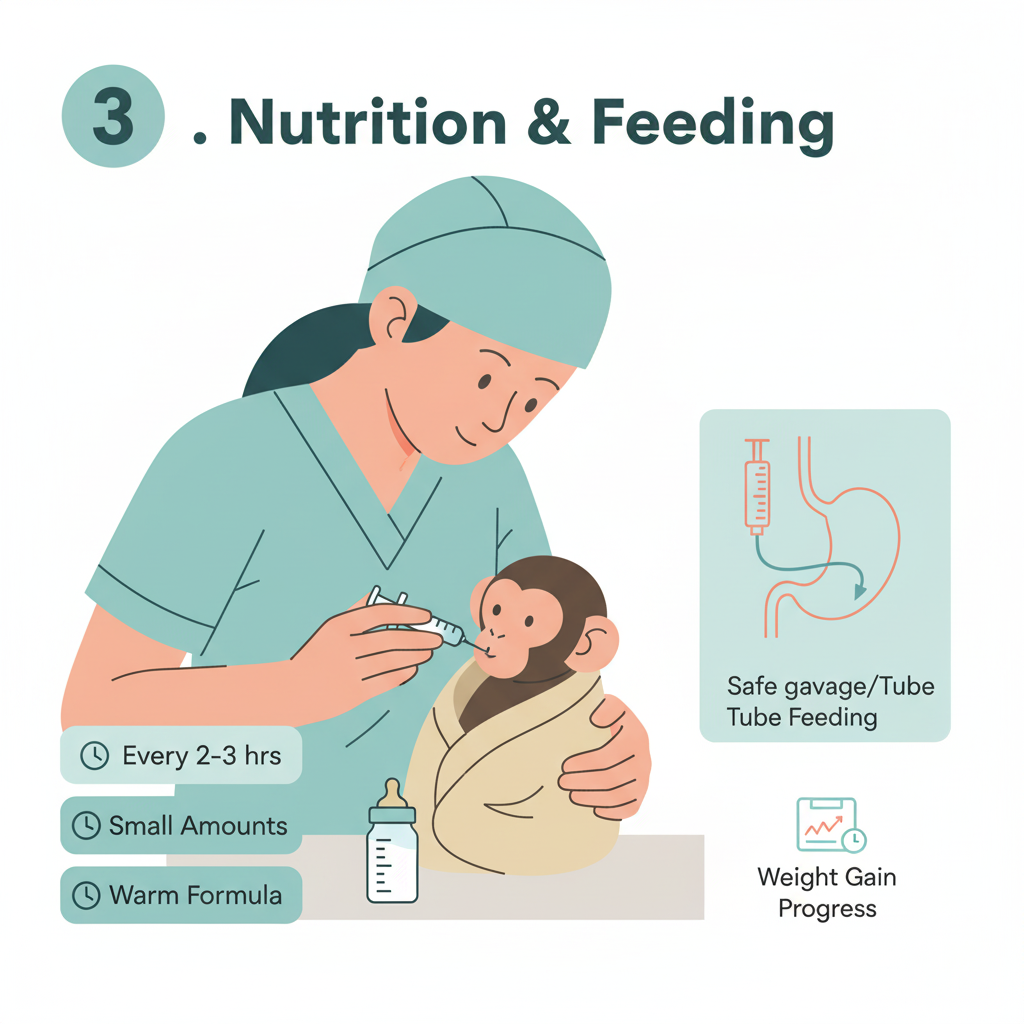
4. Gentle Care and Emotional Support
Survival isn’t only about physical health — emotional comfort matters, too. Staff use soft fabrics, dim lighting, and soothing sounds to create a stress-free environment. Techniques like “kangaroo care,” where the infant rests against a caretaker’s chest, help regulate body temperature and heart rate while simulating natural bonding.
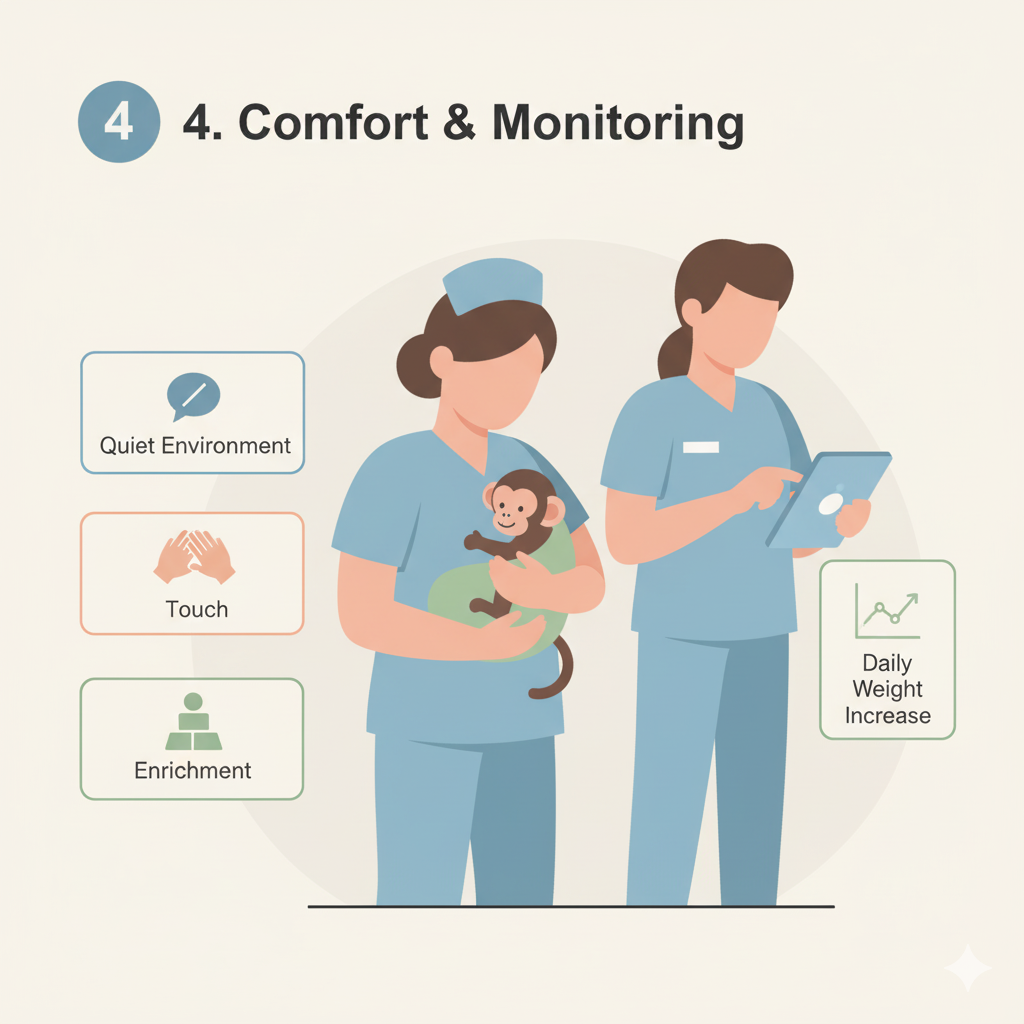
5. Monitoring, Enrichment, and Socialization
Daily charts track weight, fluid intake, and development milestones. As the baby grows stronger, enrichment activities such as soft toys and safe textures encourage natural movement. Eventually, carefully supervised introductions with other young monkeys allow the baby to learn vital social cues for reintegration.
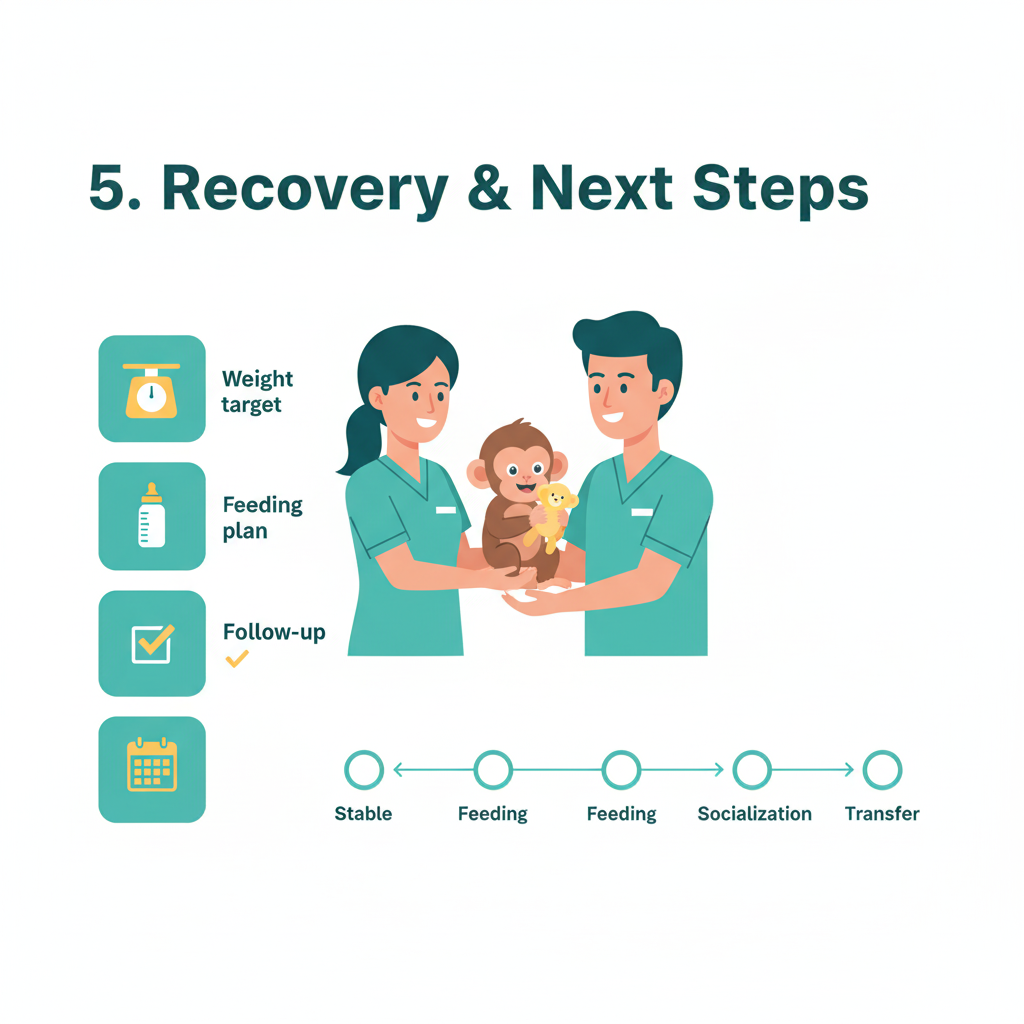
6. Recovery and Transition to Rehabilitation
Once stable, the newborn is prepared for transfer to a primate rehabilitation center. Here, long-term goals such as building strength, foraging skills, and group bonding take place. In rare and fortunate cases, if the mother is located and receptive, reunification becomes the best possible outcome.
Why This Matters
Newborn monkey care is more than a medical procedure — it’s a compassionate mission that blends veterinary science with wildlife conservation. Each step helps ensure that vulnerable primates not only survive but also have a chance to thrive, either back in the wild or in safe sanctuaries.

